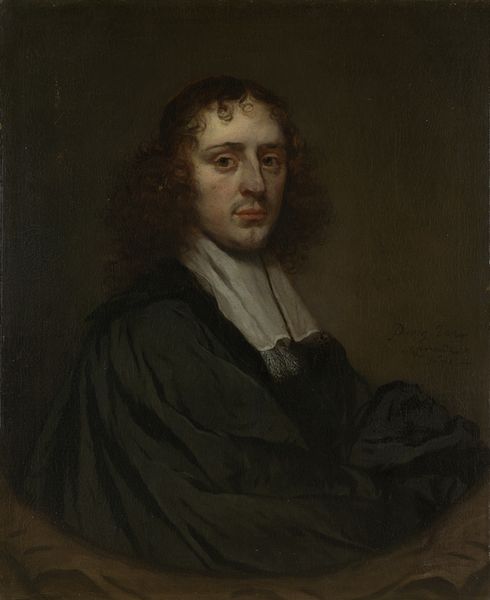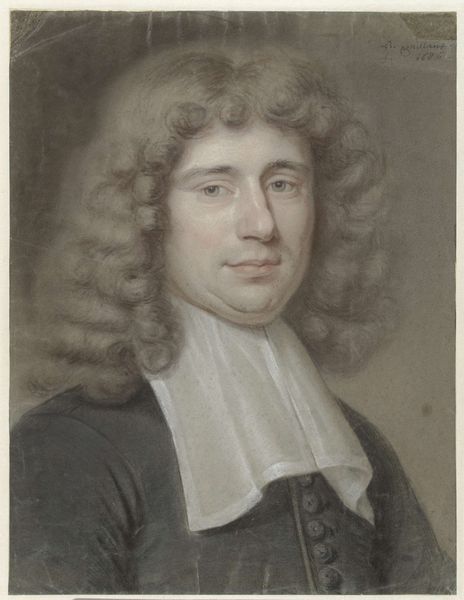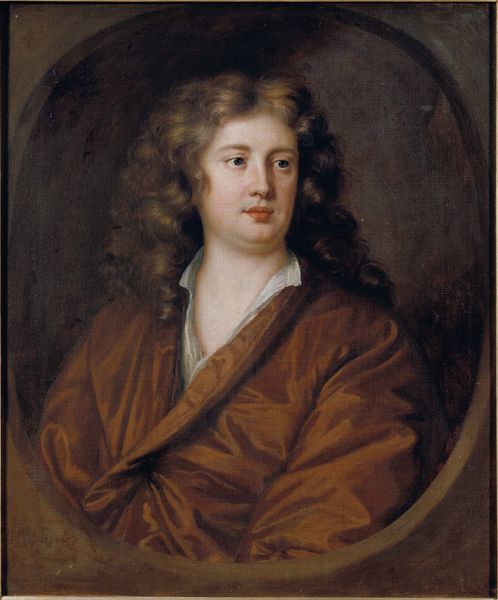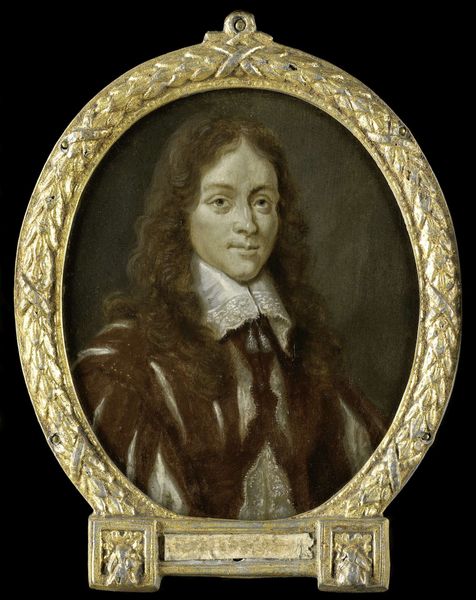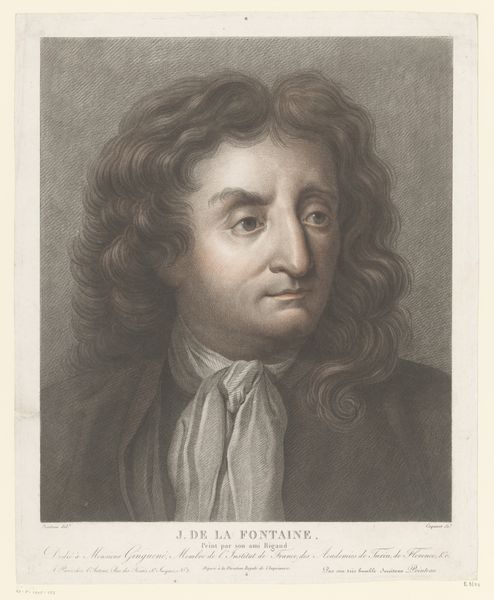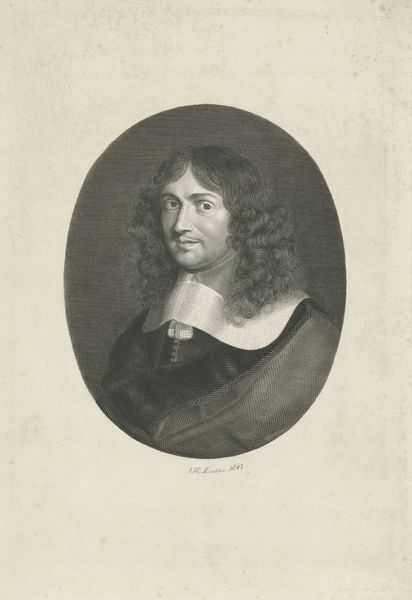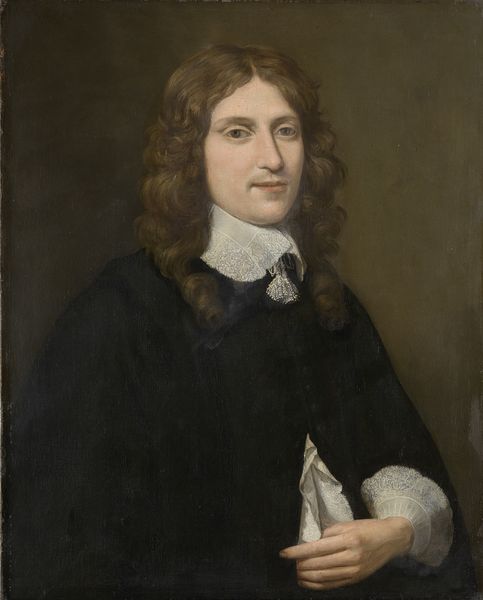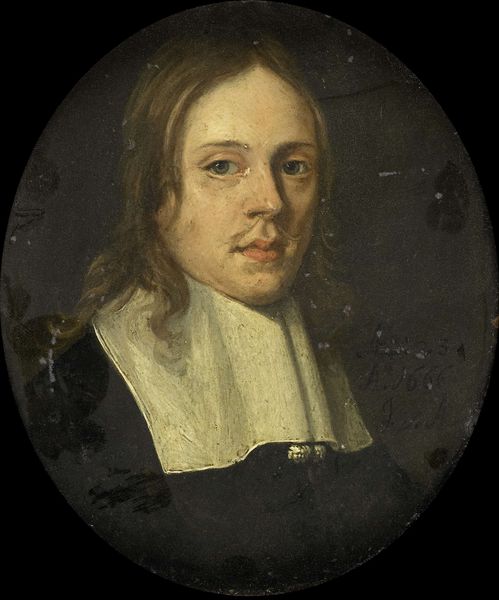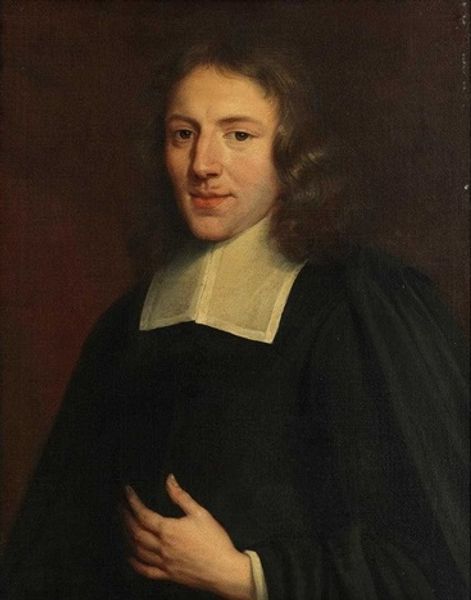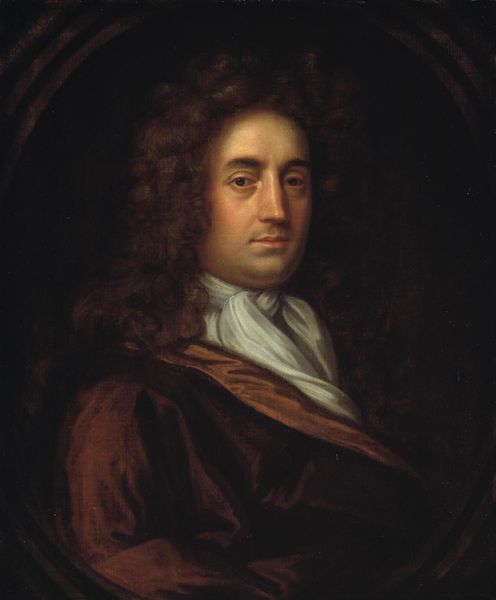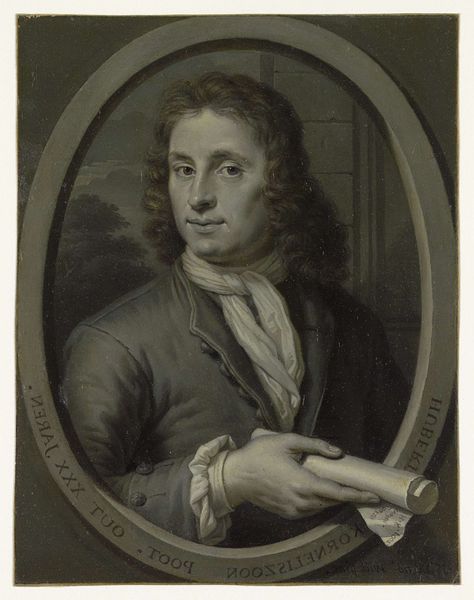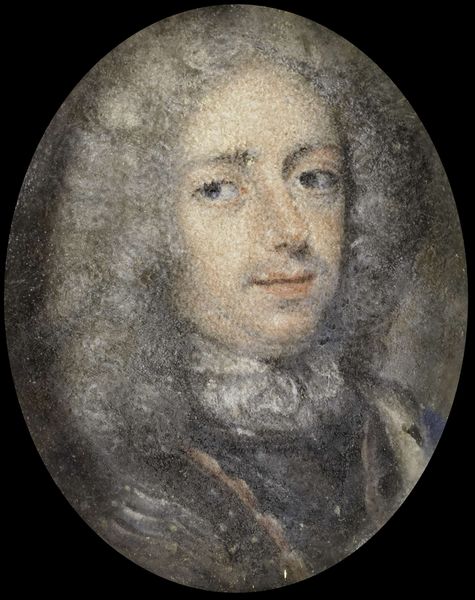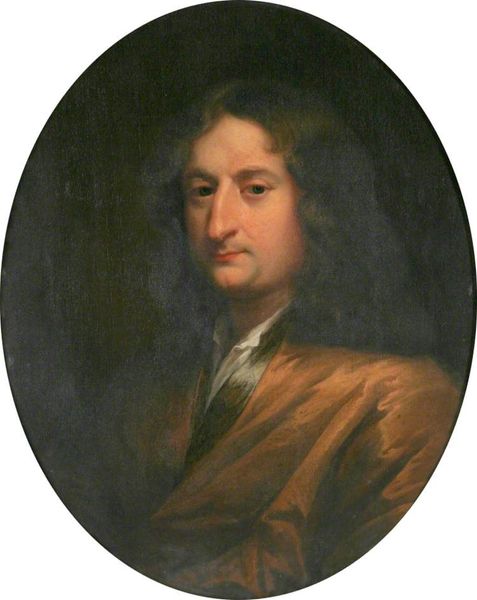
Dimensions: support: 704 x 590 mm
Copyright: CC-BY-NC-ND 4.0 DEED, Photo: Tate
Curator: Here we see "Portrait of Richard Colman," an oil on canvas likely from the British School of the 17th century. It's part of the Tate collection. Editor: He looks wistful, doesn't he? Almost lost in thought. There's a stillness, a quietness about the portrait that draws you in. Curator: Indeed. The oval format focuses our attention directly on the subject's face and the stark contrast between his dark attire and the luminous white collar is quite striking. Editor: It's interesting how the artist uses light to emphasize his features, especially around the eyes. Gives him a sort of… knowing expression. Curator: The symmetry is carefully constructed, subtly disrupted by the fall of light, creating a dynamic tension. Editor: Overall, it's a really captivating portrait. It makes you wonder about the story behind those eyes. Curator: Precisely, an engaging study in form and affect. Editor: A man of mystery, indeed.
Comments
tate 6 months ago
⋮
http://www.tate.org.uk/art/artworks/british-school-17th-century-greenhill-portrait-of-richard-colman-t07113
Join the conversation
Join millions of artists and users on Artera today and experience the ultimate creative platform.
tate 6 months ago
⋮
This comes from an interesting group of Colman, Barnardiston, Ranby and other family portraits which were formerly at Brent Eleigh Hall, in Suffolk. The antiquarian Rev. Edmund Farrer viewed the whole group there in 1903, shortly after which they were partially dispersed. This portrait, together with others thought to depict the sitter's kinsman Robert Colman and Robert's wife Dionesse (Tate T07240 and T07241) continued to descend in the Brown family, until they were presented to the Tate Gallery in 1997. A partly erased inscription identifies the sitter as Richard Colman, and Farrer indicates that it originally continued 'Councell at Law. 1662.' According to his monument in St Mary's Church, Brent Eleigh, Richard was the heir of Sir Edward Colman and his wife Dyonise. He may have resided at Salisbury, where, again according to his monument, he died on 13 October 1672 at the age of forty, although surviving family papers include one document addressed to him at his chamber in Lincoln's Inn in 1670. This Inn of Court, for practising lawyers, is in London. A further inscription on this portrait reads: '[F]. Vandijks'. This may have been added later to suggest, anachronistically, that it was painted by the celebrated artist to the court of Charles I, Sir Anthony van Dyck (1599-1643). There was also a Dutch portraitist called Abraham van Dyck (circa 1635-72) who is thought to have worked briefly in England, but Dr Rudi Ekkart of the Rijksbureau voor Kunsthistorische Documentatie confirms that the present portrait is not consistent with his style. Because of the link with the city of Salisbury, it has also been proposed that it might have been painted by the Salisbury-born English artist John Greenhill, but the handling of the paint does not convincingly bear this out. Presumably originally rectangular, this work, painted on canvas, was cut down to its present oval shape at some time before 1903, possibly to match other oval-framed portraits in the Brent Eleigh collection. Further Reading Rev. Edmund Farrer, Portraits in Suffolk Houses (West), London, 1908, p.45, no.7; reproduced facing p.44.G. Gery Milner-Gibson-Cullum, Genealogical Notes Relating to the Family of Cullum, London, 1928, p.21. Karen HearnNovember 2000
